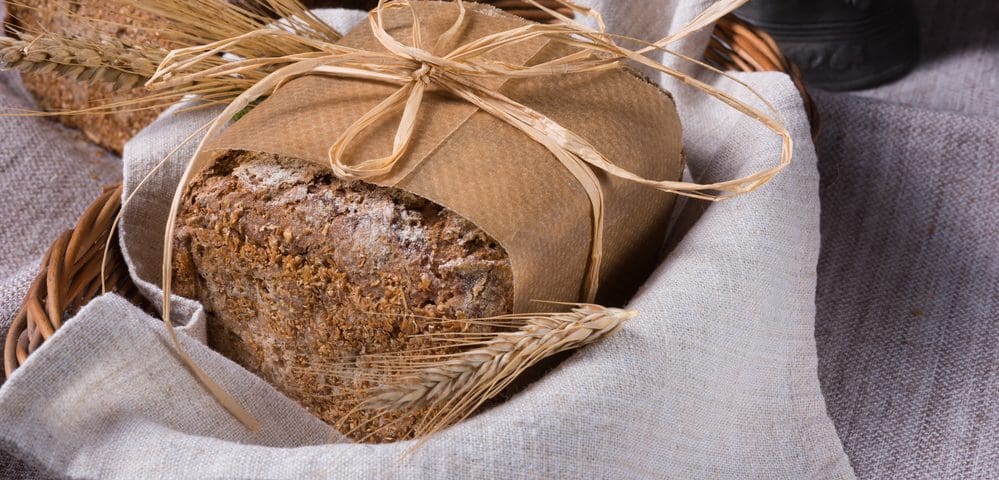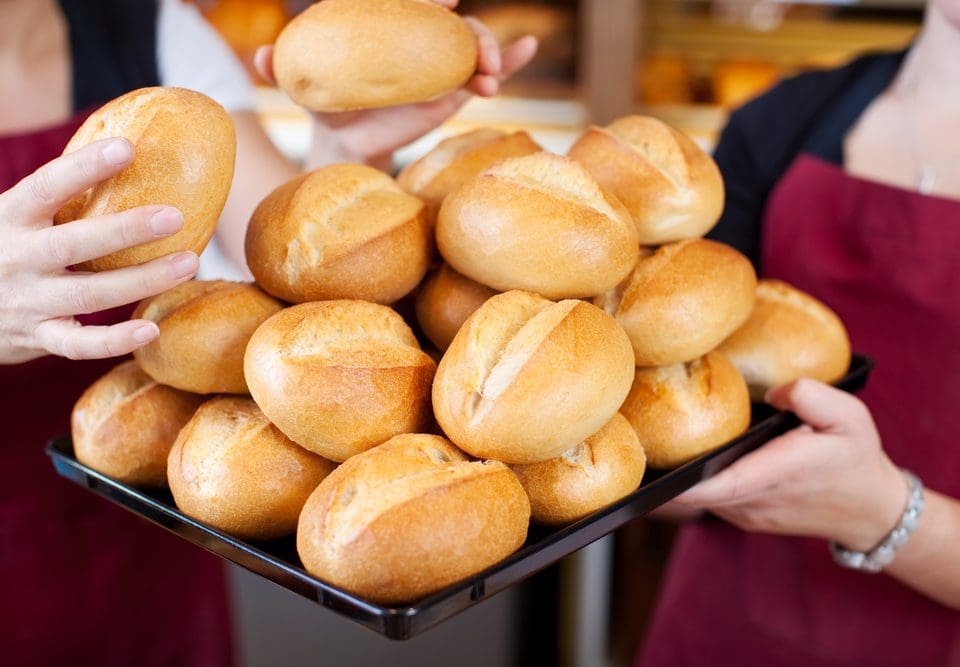
Accreditation & Industry Links
April 23, 2019
Bread and Roll Premix
May 22, 2019Furbeinfroh Premix

Sarah Jane Furbeinfroh Premix is a tasty multi-grained bread premix containing a range of whole & kibbled grains requiring only the addition of yeast & water. Suitable for a range of related bread & roll products to suit individual bakery requirements.
Method for Basic Bread or Rolls
Ingredients
| Bread Maker | Commercial Mixer | ||
| Bread & Roll Premix | 600g | 10kg | 25kg |
| Yeast | 7g | 120g | 300g |
| Water | 370g | 6.2kg | 15.4kg |
Method
- Add Yeast to the weighed out Premix
- Add Water
Note: The water absorption of Flour may vary slightly. When adding water it is advised that not all water is added immediately. Add approximately 90% of the water initially and check dough – add remaining water until dough is at the required consistency.
- Mix as recommended below
| Mixer Type | Slow | Fast |
| Two Arm | 30 – 35min | |
| Cake | 10 – 12min | |
| Hi Speed | 0.5min | 3 – 3.5min |
| Spiral | 3min | 10 – 12min |
Proofing the Dough
When finished mixing and kneading, gently shape the dough into a round and place in a lightly oiled bowl, that is double the size of the dough to allow for expansion/proofing of the dough and seal with lid, plastic wrap or damp tea towel to prevent a skin from forming on the dough whilst resting as it will affect the proofing process. Then place it in a warm, moist, draught-free place to allow the dough to rise/proof. This could be in an esky or microwave with a bowl of hot water to provide the humid environment. The ideal temperature for proofing/rising bread dough is around 30°C. Leave the dough to proof until it is double its original size.
This can take anywhere between 40-80 minutes, depending on the temperature of the proofing environment, temperature of ingredients and type of recipe. When the dough is ready, it will retain a finger imprint when lightly pressed. If left to rise for too long, the bread texture will be uneven and have large holes. If not left for long enough, it may have a heavy, dense texture. The slower the rising, the more even and close the bread texture will be.
Divide, knock back and shape dough
Once the dough has doubled in size, turn the dough out onto a lightly floured surface and gently degas by pressing the dough out evenly with your hands. Divide the dough into required size pieces. Round the pieces of dough into a ball, this is a gentle “knock back” or degas for the dough as well as an intermediate shape. Cover the dough, allow it to rest before final shape/mould.
The knock back releases excess carbon dioxide produced by the yeast during rising so the final bread won’t have a “yeasty” flavour. The intermediate shape brings the dough together and the rest allows the gluten to relax making the final shape/mould easier.
Final Proof
Shape the dough by flattening out the round of dough and shape or cut into the desired shapes. A light spray of water on the loaf will allow seeds or other garnish to be sprinkled if desired. Leave the bread to rise in a warm, moist environment until the loaf almost doubles in size. The time may vary depending on environmental conditions – humidity and temperature.
Baking
- Pre-heat the oven to 220°C
- Carefully place prepared loaves in the oven avoiding sudden movement which may cause dough to drop back
- Bake at 2200C for approximately 25 minutes for a standard loaf
- Check if the loaf is cooked by tapping the bottom of the loaf – it should sound hollow if done, if it doesn’t then return it to the oven for another 5 – 7 minutes
- Once cooked, place on a rack and allow it to cool for at least 30 minutes. If baked in tins bread should be removed from the tins and placed on racks immediately it is removed from the oven to prevent the loaf from collapsing
Note: Oven temperature and temperature control may vary between 200°C and 230°C . The exact temperature required being dependent on the oven itself, type of bread and size and/or number of loaves. Typically the temperature of the oven should be set so that the loaves will start to “colour” in about twelve minutes after being placed in the oven.
Cooling And Wrapping Of Bread
The bread should be cooled on racks until the internal temperature of the loaf is below 350C before wrapping or cutting. Typically this may take approximately 45-60 minutes depending on ambient conditions. This will allow the bread crumb to set and will prevent sweating or the loaf shape collapsing.


